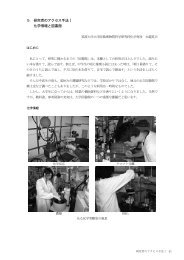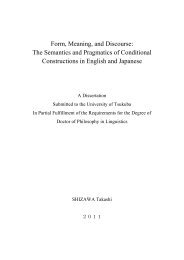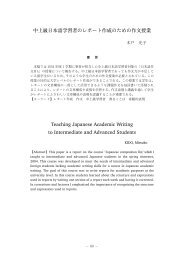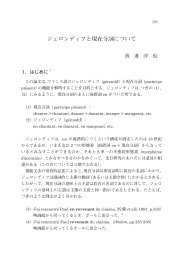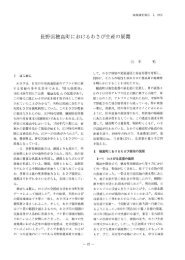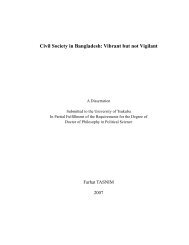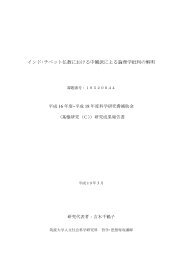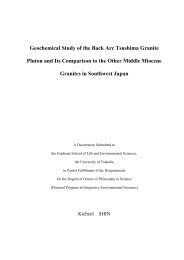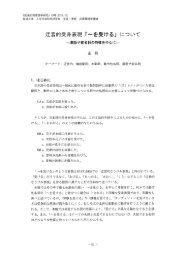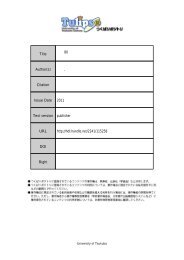Gamma Rays and CarbonIon-Beams Irradiation for Mutation ...
Gamma Rays and CarbonIon-Beams Irradiation for Mutation ...
Gamma Rays and CarbonIon-Beams Irradiation for Mutation ...
Create successful ePaper yourself
Turn your PDF publications into a flip-book with our unique Google optimized e-Paper software.
large number of improved mutant crops demonstrating, disease resistance,<br />
early maturity, drought tolerance, <strong>and</strong> better yield. Over the past 60 years,<br />
1,800 new mutant plant varieties induced by radiation have been officially<br />
released <strong>and</strong> are now growing on millions of hectares of l<strong>and</strong>. In Japan,<br />
more than 10 years ago a mutant variety of Japanese pear ‘Nijisseiki’ was<br />
developed by low dose-rate gamma rays irradiation method. This new<br />
variety, named as ‘Gold Nijisseiki’ has an excellent resistance against black<br />
spot disease. By the FAO/IAEA laboratories <strong>and</strong> the member states such as<br />
Indonesia <strong>and</strong> Malaysia, mutant varieties of banana which are more<br />
resistant to plant disease (Fusarium) <strong>and</strong> higher yield are being developed<br />
by radiation mutation in combination with tissue culture techniques (Machi,<br />
2002).<br />
In terms of radioactivity, the improved mutant crops obtained<br />
by gamma rays are not dangerous <strong>for</strong> consumption by human beings, <strong>and</strong><br />
on the contrary, is useful even <strong>for</strong> production of safe food. Most food<br />
irradiation facilities utilize the radioactive element 60 Cobalt as a source of<br />
high energy gamma rays. These gamma rays have sufficient energy to<br />
dislodge electrons from some food molecules, thereby converting them into<br />
ions (electrically charged particles). <strong>Gamma</strong> rays do not have enough<br />
energy to affect the neutrons in the nuclei of these molecules; there<strong>for</strong>e,<br />
they are not capable of inducing radioactivity in the food. 60 Cobalt is<br />
usually the preferred source of radiation <strong>for</strong> food. <strong>Irradiation</strong> dosage is a<br />
function any energy of the radiation source dependent upon the time of<br />
exposure. Doses are usually expressed by kiloGrays (kGy); 1 Gray is<br />
equivalent to 1 joule of absorbed radiation/kg tissue (Doyle, 1999).<br />
As mentioned above, gamma rays at present are the most<br />
favored mutagenic agent, having no particles <strong>and</strong> electric charge. However,<br />
their great penetrating power makes them dangerous as they can cause<br />
considerable damage when they pass through the tissue. The distance<br />
14




